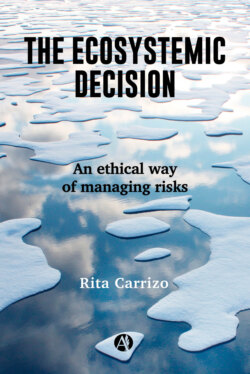Читать книгу The Ecosystemic Decision - Rita Carrizo - Страница 10
На сайте Литреса книга снята с продажи.
The administrative man
ОглавлениеIn the 1960s and 1970s, in the light of management science, Herbert Simon developed a new theory of human decision-making within organisations. It had at its core the “Administrative Man” or “Homo Administrativus” (HA), a new archetype of decision-maker that differs in some ways from the old economic man and whose decisions were rather task-oriented and had no pretensions for limitless rationality. The motivation of the HA was no longer the optimisation or maximisation of individual benefit or utility, but rather the achievement of “satisfaction” through the selection of a “good enough” alternative, always in terms of individual utility or monetary benefit. Thus, faced with different options, they would perform scrutiny until they found an option capable of satisfying what they were looking for, suspending the process from that moment on.
In Simon’s words,
“Administrative theory is peculiarly the theory of intended and bounded rationality —of the behavior of human beings who satisfice because they have not the wits to maximise” (Simon, 1957, p. 24).
The author uses the word “wit”, which has various meanings, e.g. intelligence, clarity, shrewdness, and understanding. Whichever is used, it would seem to make clear that HA does not possess the ability to maximise profit or satisfaction.
In contrast to the HE, who could deal with the world around them as absolute connoisseurs of everything that happens in it, the HA archetype describes an individual who considers himself or herself incapable of having such knowledge and who understands that the world he or she perceives is only a simplification of the “buzzing, blooming confusion that constitutes the real world” - to use Simon’s words. Thus, for the HA, not all facts and events matter in light of what they need to decide about, and so they make decisions using a simplified picture that contains only the factors deemed relevant, ignoring the interrelatedness of things -”so stupefying for thought and action”- according to the author.
It seems that even the HA could not get rid of the individualistic quest for success, profit, and satisfaction of its archetypal peer. But, instead of wasting time looking for the maximum possible benefit, they accept the kind of profit that can fulfil their expectations. Rather, they seem to be decision-makers in a hurry to achieve success, so much in a hurry that they reduce the decisional panorama to the little they are able to see, ignoring the interrelationships between things. Possibly, for these decision-makers wondering: what about other individuals going down the same path in pursuit of satisfaction? Or what if the option that satisfies me would harm others? I dare to say that these ethical dilemmas are unlikely to arise in the HA simplification and speed.
Once again, the historical overview presented at the beginning of the chapter seems to expose many HAs in action since the mid-20th century, decision-makers in a relentless race for well-being and unlimited progress, with a rather short-sighted and simplified view of the ecosystem.
